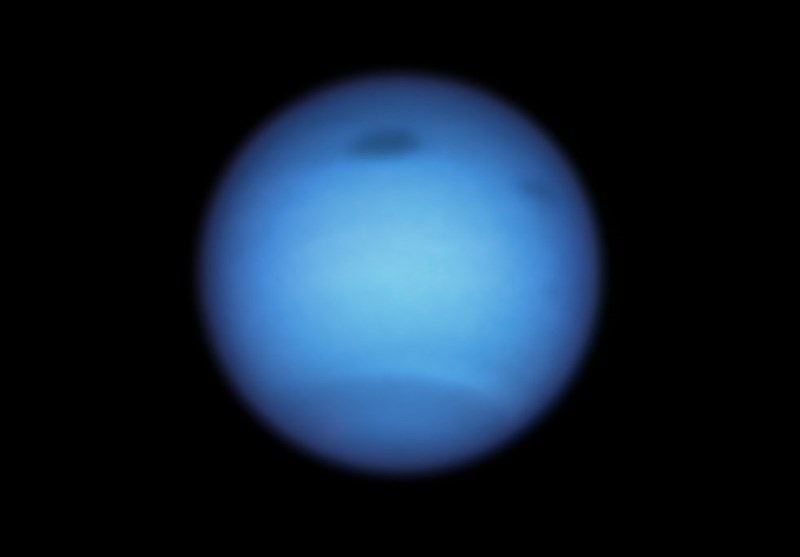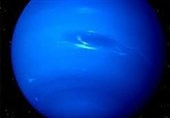Dark Storm on Neptune Mysteriously Reverses Direction
TEHRAN (Tasnim) – Astronomers using NASA's Hubble Space Telescope watched a mysterious dark vortex on Neptune abruptly steer away from a likely death on the giant blue planet.
A mysterious dark storm on Neptune has been spotted abruptly reversing its direction by astronomers using NASA's Hubble Space Telescope, something they say has never been observed before, SkyNews reported.
The storm, which is wider than the Atlantic Ocean, has been raging in the gas giant's northern hemisphere since at least 2018, and was slowly drifting towards the planet's equator where such storms are expected to dissipate.
But instead of going gently to its death, and to the surprise of observers, the vortex suddenly changed direction by August 2020 and doubled back to the north.
It is the first time the Hubble, which is the only telescope which has the sharpness and sensitivity in the visible spectrum of light to track these elusive features, has ever seen this kind of atmospheric behaviour.
Adding to the mystery, Hubble spotted another smaller dark spot in January of this year which appeared near the larger storm. The scientists suspect it may have been a piece of the giant vortex that broke off and drifted away before disappearing.
"We are excited about these observations because this smaller dark fragment is potentially part of the dark spot's disruption process," said Dr Michael Wong of the University of California at Berkeley.
"This is a process that's never been observed. We have seen some other dark spots fading away, and they're gone, but we've never seen anything disrupt, even though it's predicted in computer simulations," Dr Wong added.
The large storm is 4,600 miles across (7,400km) - more than the distance from London to Miami - and is only the fourth dark spot that Hubble has observed on Neptune since 1993.
Two other storms were discovered by the Voyager 2 spacecraft in 1989, but they had disappeared by the time Hubble swivelled round to monitor them.
"It's still a mystery how these storms form, but this latest giant dark vortex is the best studied so far," said NASA.
"The storm's dark appearance may be due to an elevated dark cloud layer, and it could be telling astronomers about the storm's vertical structure.
"Another unusual feature of the dark spot is the absence of bright companion clouds around it, which were present in Hubble images taken when the vortex was discovered in 2018," NASA added.
"Apparently, the clouds disappeared when the vortex halted its southward journey. The bright clouds form when the flow of air is perturbed and diverted upward over the vortex, causing gases to likely freeze into methane ice crystals.
"The lack of clouds could be revealing information on how spots evolve," the researchers added.






